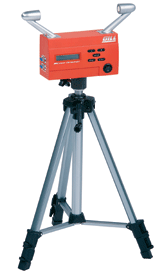 |
If you ever watch a sprinting event on television, you may hear the sportscasters reference the wind with phrases like "legal wind" or "too much wind". What does all of this mean?
Wind is an big deal in sprinting races like the 100m and 200m dash. Not only are these races run completely or primarily in one direction, but the margins of victory are also very narrow, being measured in hundredths of seconds. A mild wind, either helping or restricting the athletes, will be significant factor in their finishing times. Although all of the runners in a particular race face the same wind, runners competing at different times or at different places will face varying conditions. This becomes an issue if you want to keep track of say, the world record for an event. How do you compare a runner who ran with the wind to one who ran against the wind? To deal with this issue, some simple rules have been created to regulate wind-aided performances.
Applicable Events
The rules of wind assistance only apply to those track events which are short enough to be run in only one direction. These include:
60 meters
100 meters
200 meters
100/110 meter hurdles
Triple jump
Long jump
In other races, such as the 400m or 800m, the runners go completely around the track and will have the wind facing their fronts as well as backs, nullifying the wind's effects.
Wind Speed Limits
In these events, the maximum legal wind assistance is 2.0 meters per second. If the runners of a race receive more wind assistance than this, their times will not be eligible as collegiate, national, or world records. (In high school track events, the wind is usually not measured or considered.) During events like the heptathlon and decathlon, the rule is slightly different. The maximum allowable wind is 4.0 meters per second for any one event, but 2.0 meters per second on average across all applicable disciplines.
Terminology and Notation
Wind assistance is normally expressed in meters per second, either positive or negative. A positive measurement means that the wind is helping the runners and a negative measurement means that the runners had to work against the wind. So, for example, winds of -2.2m/s and +1.9m/s are legal, while a wind of +2.1m/s is too much assistance and considered illegal. The terms "tail wind" and "head wind" are also frequently used. A tail wind pushes the runners forward (+) while a head wind pushes the runners backwards (-).
Here are some example from the recent Running Rebels / Top Pacers Meet
Athlete Name Age Team Name Time Wind Adjustment
1 Collier, Reonna 14 Bsharp Acade 12.50 -1.8 12.32
2 Pennywell, Jenae 14 Learning Spe 12.78 -1.8 12.59
3 Paxton, Temesha 13 East Palo Al 12.82 -1.8 12.63
4 Nolen-Revera, Mikayla 13 Umoja TC 12.89 -1.8 12.70
5 Awakoaiye, KaRa 13 CA TC 12.93 -1.8 12.74
6 Devereaux, Najon 14 Team Velocit 12.97 -1.8 12.78
7 Estell, Rachael 13 Learning Spe 12.98 -1.8 12.79
8 Robinson, Tierra 13 CA TC 13.36 -1.8 13.15
Here are a few tools that will help you with properly measuring your athletes time.
100 Meters Wind Adjustment Calculator
200 Meters Wind Adjustment Calculator